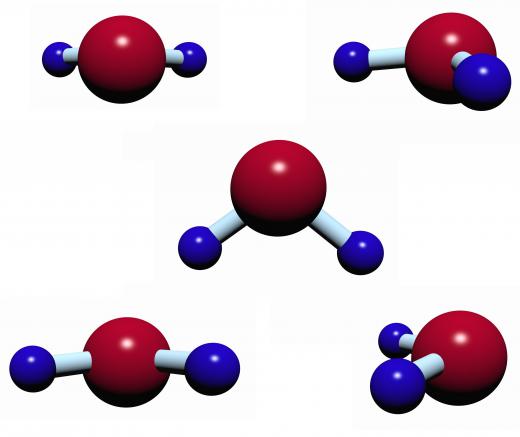At AllTheScience, we're committed to delivering accurate, trustworthy information. Our expert-authored content is rigorously fact-checked and sourced from credible authorities. Discover how we uphold the highest standards in providing you with reliable knowledge.
What Is Osmotic Concentration?
The ability of cell membranes to be selectively permeable results in a specialized type of diffusion referred to as osmosis. Osmotic concentration pertains to the volume of water contained in solution as result of its movement past a membrane that is selective about what gets through. Even though water may move unhindered in either direction, the movement is primarily from where the water molecules are more concentrated to where they are less concentrated. This difference in the concentration of certain molecules in one region as compared to another is said to establish a concentration gradient. Solute, which are molecules in solution, generally do not move unchecked past selective cell membranes.
As diffusion can quickly occur over a short distance, the diffusion rate and osmotic concentration is generally determined by the movement of particles. How fast or slow these particles move is affected by their shape and size, their electrical charges, and the temperature. With an increase in temperature, the rate of diffusion also increases due to the increased rate of particle movement. Particles of different substances mixed together will diffuse separately. When particles are not added to or taken away, a state of stability is reached, meaning that the particles are distributed equally in both regions.

The degree of membrane permeability depends on the size of the substance, its electrical charge, and the makeup of the membrane. A membrane is considered to be permeable to a substance if it allows it to pass through, and impermeable when it does not permit passage. Selectively permeable membranes do permit certain substances to pass through them readily, but not others, such that cellular membranes are most permeable to molecules which are small as well as molecules that are fat-soluble. Water molecules are the exception to this, as they can quickly go through a liquid bi-layer.
Determined by the external environment and the needs of the cell, plasma membranes can prevent passage of a particular substance at certain times and permit it to pass at other times. Alterations in cellular volume and the distribution of ions can affect osmotic concentration. By the regulation of osmotic concentration, a cell controls its volume and its internal environment, which can be significantly different on the outside of it.
The osmotic pressure of a solution refers to the tendency of water to move in to that solution by osmosis. Solutions that have high solute concentrations will have low osmotic concentrations as well as higher osmotic pressures. Going in the other direction, a solution with a low solute concentration will have a high concentration of water as well as a low osmotic pressure.
AS FEATURED ON:
AS FEATURED ON:











Discuss this Article
Post your comments